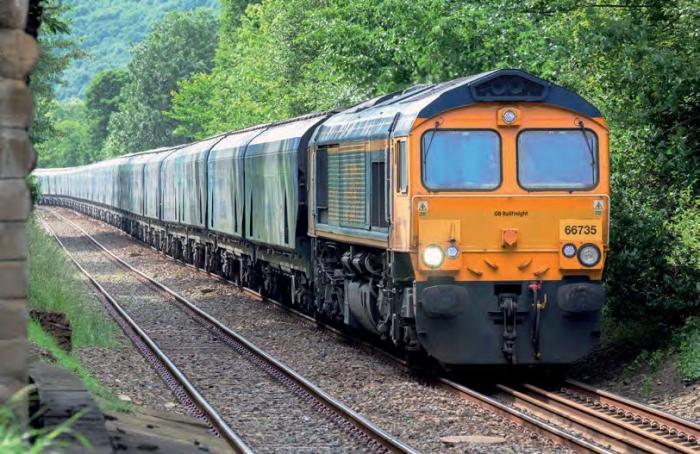Rail Freight Group
The Rail Delivery Group’s recently published information shows the benefits that rail freight delivers to the UK economy (p20, last month). These are assessed to be some £1.7 billion per annum arising through environmental gains, in reduced carbon and air quality emissions, road safety and congestion relief, and also through productivity gains to businesses that use rail.
The research also demonstrates how these benefits are broken down by region, which highlights the very significant contribution that rail freight is making to the north of England. Indeed, some £737 million per annum accrues across the north west, north east and Yorkshire, 43% of the total for the entire UK. These benefits accrue across all market sectors, but there is a significant part that arises from businesses in the north using rail for imports and exports from southern ports, and who gain from the reliability and regularity of freight services into the regional hubs.
Yet these businesses are not only focused on north-south traffic, but increasingly are looking to grow rail on the east-west routes across the north of England. RFG recently asked our members in the region for their projections of traffic demand if the capacity were to be available. This showed that by 2030 there could be some 25 to 30 services per day, with commodities including:
• biomass traffic from Liverpool to Drax;
• non-ferrous higher value scrap metal in eight-foot shipping containers;
• ferrous steel;
• processed slab steel in eight-foot shipping containers;
• automotive steel coil;
• intermodal containers (vast bulk at 9ft 3in or 9ft 6in height);
• swapbodies at 2,550 or 2,600mm width;
• gypsum rock;
• aggregates;
• spoil;
• household waste in eight-foot containers;
• Network Rail Infrastructure Services; and
• other (automotive, bulk, forest products).
The ambitions of these businesses have been driving a groundswell of support for rail freight in the north of England. Transport for the North has included rail freight in its strategies and developments since its inception, and vocal supporters including Lord Prescott have spoken on the need to ensure rail freight is promoted to support the ambitions of northern ports.
Yet despite this support, and the obvious demand, the necessary capacity and capability for freight does not exist, and there is growing unease over the prospect that freight will be ‘descoped’ from the current upgrade and electrification of the north trans-Pennine route, which is presently in development.
In response to a recent Parliamentary Question from Andy McDonald, Shadow Secretary of State for Transport, Rail Minister Jo Johnson said: ‘The Department for Transport has asked Network Rail, as part of the development work for the Trans-Pennine Route Upgrade, to provide options for freight capacity and capability on this route. This development work is still ongoing and no final decision will be made on the scope of the upgrade, including options for freight, until the outline business case is completed and the costs, benefits and affordability are properly understood.’
Yet media reports have also suggested that the Department is close to taking decisions to scale back the electrification of the route, which could also have serious implications for freight capacity and importantly gauge clearance, which has a particular synergy with the work necessary to install overhead wires.
Although the north trans-Pennine route sees little freight today, it remains the optimal choice for new services, offering the most direct route between the region’s ports and urban centres. The upgrade, based on an hourly off-peak path, would therefore provide an efficient journey time even over the relatively short distance, enabling rail operators to offer competitive services. Assessment of other routes, including the Calder Valley, suggests it would be more challenging, particularly for intermodal trains. And although the study into Skipton – Colne is in its infancy, there already appear to be some challenges elsewhere on the network if trains were to be routed this way.
Other east-west links are also challenging, with the East West Railway Company descoping freight from the central part of that route. There remains pressure to reroute through freight away from London. The Felixstowe to Nuneaton upgrade remains an ambition, but there is much work yet to be undertaken and new franchised services in East Anglia have eaten into the capacity that previously existed for new freight services. This limited choice for freight operators on ways to cross the country makes the trans-Pennine route ever more critical.

With Brexit looming, there is a vital imperative to ensure that all the UK ports are well-equipped to manage changing trade patterns, and to increase the productivity of UK importers and exporters. The recently published DfT Port Connectivity Study makes a compelling case for inland transport links, both road and rail. If the northern ports and businesses are to meet their full potential they must continue to benefit from transport upgrades, and in particular the vital upgrade of the north Trans-Pennine route.
An opinion column of the Rail Freight Group, www.rfg.org.uk
